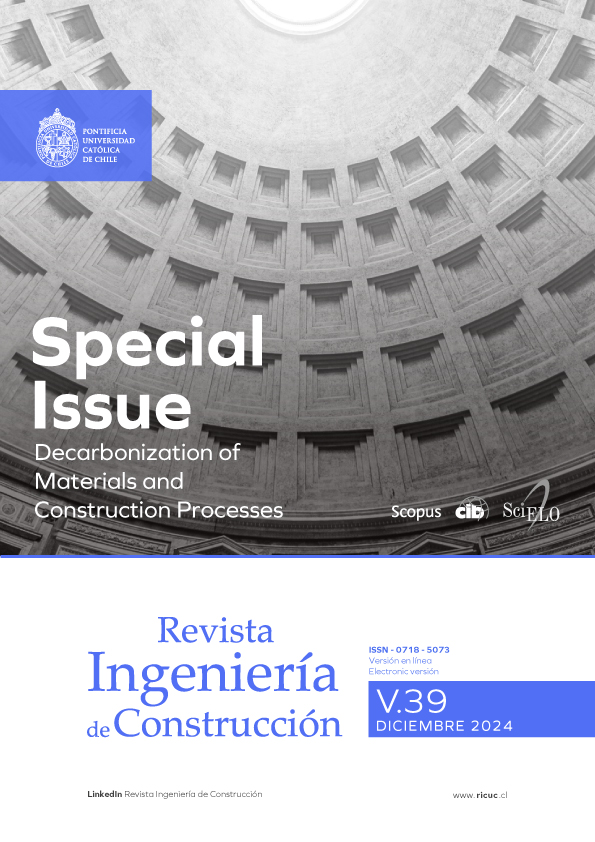3D printed concrete as a source of recycled aggregates: potential for multi-recycling and CO2 sequestration
DOI:
https://doi.org/10.7764/RIC.00130.21Keywords:
Additive manufacturing, multi-recycling, density, water absorptionAbstract
Additive manufacturing of concrete (3D printed concrete, 3DPC), is an emerging technology with numerous possible applications and benefits for the digital transition of the construction industry. At the same time, there remain open questions about the environmental suitability of 3DPC. One such aspect is its circularity, i.e. recyclability. Therefore, in this study, the viability of recycling 3DPC is studied on normal- and high-strength 3DPC concretes produced with 0–100% of fine recycled aggregate (fRA). After testing for basic mechanical properties, the specimens were crushed and new (2nd generation) fRA were obtained and tested. The results point to a high potential for recyclability of 3DPC and fRA conducive to multi-recycling and CO2 uptake through carbonation.


